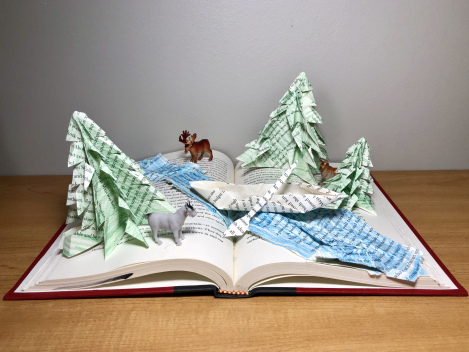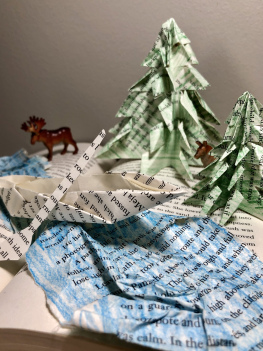
Liz Newberry’s article Canoe Pedagogy and Colonial History: Exploring Contested Spaces of Outdoor Environmental Education mentions that the Euro-westernized way of teaching focuses more on the details of the fur trade and the daily lives of voyageurs during colonialism. Although these are important aspects of Canada’s history, we must remember and learn about the Indigenous part, as well. In order to do this, we must move away from the single-sided stories to understand the truth behind it – this includes the process of colonization through the Indigenous lens. The article states:
“Education, he surmises, fails to prepare the young for the aggressiveness and ethical complexity of the world in which they are to live. I believe that much canoe pedagogy similarly paints scenic and inspiring pictures for students. If to educate is in some way meant to be a preparation, we might become more curious about our attachments to the happy or simple narratives that frame our pedagogies. Idealized and uncluttered narratives do little to prepare students for the clutter and complexity of everyday social life. If we want to learn to live better – more ethically – in the complexity, we need to educate for complexity.”

I believe that this quotation emphasizes the fact that our education system has fallen through a euro-westernized way of teaching which has hidden the truth behind Canada’s history or at least has “sugar-coated” it, making it appear more positive than it really is. Moreover, in the euro-westernized way of teaching, we tend to follow the “script” provided in the textbook or curriculum, which limits us. With that, we need to realize that it is okay to go beyond the textbook. In class we discussed truth and reconciliation with an emphasis on truth because we cannot get reconciliation until we reveal the truth. In the Indigenous ways of knowing, they allow nature to do the teaching. I believe that connecting the books/curriculum that the euro-western classroom follows with nature, we will be able to create a more successful environmental education program that touches on nature while answering why we are learning it. Doing this will also allow students to further experience and appreciate what the world has to offer, while learning how to interact with and respect it – including all animals, plants, and other species – rather than being anthropocentric.
For this creative journal, I created a small landscape out of an old book. I decided to make the entire piece out of pages from the book to represent the interconnectedness of nature and storytelling and how they intersect to create meaningfulness in environmental education. Newberry states, “colonial histories and legacies always exist in the background of Canada, and the more we ignore this, the less we are able to create something better in the present”. With that, it shows the importance of integrating classroom pedagogies with nature. As previously stated, the Indigenous ways of knowing include allowing nature to teach us. With that, I believe that the indigenous people introduced environmental education, but through colonization, this slowly started drifting away and instead the focus has moved towards having a more structured education within a classroom. Through my visual, I wanted to represent the importance of understanding or even just acknowledging the history behind the land, as well as the importance of integrating the Indigenous pedagogies into the Euro-western pedagogies. Newberry states, “I don’t believe that the former curricula are always wrong; rather, they are incomplete” and “Living well in this diverse nation requires a tenacious willingness to encounter and be changed through the stories of others. On canoe trips, both canoes and the land we travel through could become canvases for a pedagogy of implication, once we are able to leave behind the easier fantasy of environmental outdoor education as politically neutral and of nature as something that simply is.” With that, I think that the incomplete part of curricula are experience and the stories that are missing. Through my visual, I hope to represent both the stories and nature and how they go together. The book represents the story telling aspect of environmental education as well as the books used in the typical Euro-western classrooms that limit what we learn about the land and the canoe floating across the pages represent the journey of truth and reconciliation as well as the journey towards a better environmental education.
